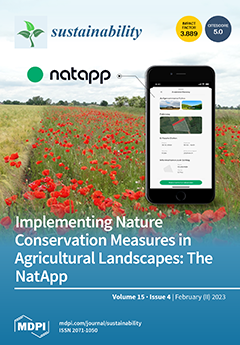Cactus cladodes are consumed by humans in arid and semiarid regions of the world. The use of biofertilizers when cultivating cacti can improve the physical and chemical characteristics of the soil, as well as the cladodes’ productivity and physical-chemical quality. We evaluated the
[...] Read more.
Cactus cladodes are consumed by humans in arid and semiarid regions of the world. The use of biofertilizers when cultivating cacti can improve the physical and chemical characteristics of the soil, as well as the cladodes’ productivity and physical-chemical quality. We evaluated the physical and physical-chemical qualities of different lengths of
Opuntia stricta (Haw.) Haw. Cladodes were grown with different biofertilizer doses. The 3 × 5 factorial design employed corresponded to three cladode sizes (8–12, 12–16, and 16–20 cm) and five doses of biofertilizer (0, 5, 10, 15, and 20%) with three repetitions in a completely randomized design. Cladode characteristics were evaluated 40 days after emergence: diameter, fresh mass, soluble solids, pH, titratable acidity, soluble solid and titratable acidity ratio (SS/TA), ascorbic acid, phenolic compounds, total soluble sugars, chlorophyll
a,
b, and total, carotenoids, and respiration. The
Opuntia stricta cladodes sized 16–20 cm exhibited better physical and physical-chemical qualities as well as better respiratory rates. The biofertilizer improved the cladodes’ physical and physical-chemical qualities, regardless of the cladode’s size.
Opuntia stricta (Haw.) Haw. cladodes had levels of antioxidant compounds similar to those of some conventional vegetables, making them suitable for improving human health in arid environments.
Full article





